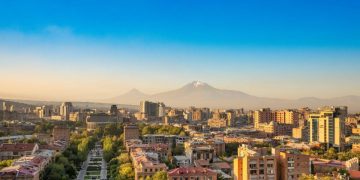TOMORROW it will be exactly 55 years since mankind first stepped foot on the Moon.
The anniversary has arrived in a refueling period, as the US ramps up efforts to return, and forge more permanent connections to the lunar surface.

Neil Armstrong took mankind's first steps on the Moon, with an estimated 650 million people watching at home.[/caption]

Of course, the US is not alone in that ambition.
After throwing billions behind its homegrown space efforts, and cementing a collaboration with Russia, China finally admitted last week that the US is a competitor on the Moon.
It's the first time China has used such language in relation to its off-planet projects.
But there will be no renaissance for the space race of the 1960s, former Nasa administrator, Sean O'Keefe, has told the Sun.
“There's an attempt to try to characterize this stuff as a race,” O'Keefe said, just weeks before China declared it themselves.
“That race has been had. It was done 55 years ago.”
Lots has changed in the past half-century.
“Now you've got several different nation states that have the capacity to get there,” explained O'Keefe.
“This is not the easiest trick in the world,” he continued.
“But at the same time, it is much more accessible today than we ever would have thought about it being 55 years ago.”

Timeline: The Apollo 11 Moon landing
July 16, 1969: The take-off
Apollo 11 launched from Cape Kennedy, Florida, carrying Commander Neil Armstrong, Command Module Pilot Michael Collins and Lunar Module Pilot Edwin “Buzz” Aldrin.
An estimated one million people descended on the area around Cape Kennedy, to watch the rocket, which was 65ft taller than the Statue of Liberty, blast off from Launchpad 39A.
July 18-19, 1969: The journey
It took the spacecraft three days to reach the Moon.
Once in lunar orbit, the lunar module – dubbed 'Eagle' – separated from the command module.
This left Collins to orbit the Moon alone in the larger craft for 27 hours while Armstrong and Aldrin made their trip to the lunar surface.
July 20, 1969: The landing
Armstrong's test pilot history saved the landing from disaster.
He saw they were heading for a large crater and skimmed across the surface to find a safe spot, setting Eagle down with only 45 seconds of fuel remaining.
There were no live TV pictures of the landing, but Armstrong deployed a camera housed in the side of the lunar module as he climbed down its ladder.
Armstrong took mankind's first steps on the Moon, with an estimated 650 million people watching at home.
Armstrong's televised image and heard his voice describe the event as he took “…one small step for a man, one giant leap for mankind”.
He and Aldrin spent 21 hours, 36 minutes on the Moon's surface.
Returning to the Moon a second time may be easier than the first.
Still, commemorative medallions bearing the names of the three Apollo 1 astronauts who lost their lives in a launch pad fire, and two cosmonauts who also died in accidents, rest on the moon's surface to this day.
Despite the human cost of the earlier days of spaceflight, today's astronauts don't exactly have an easy ride.
“I wouldn't say that yet,” said O'Keefe, before adding: “I think it's safer than what it's been.
“You can't describe anything that is a one in 100 chance of, you know, an explosion – which is what the shuttle was.
“That was it. That was the real statistic.
“I mean, there was a lot of celebration at Nasa when everybody figured out that maybe we've improved that to one in 250.
“But that's still pretty damn dangerous. It's still very exploratory.”

Find out more about science
Want to know more about the weird and wonderful world of science? From the Moon to the human body, we have you covered…
- When is the next Full Moon?
- What is a Super Moon?
- What is SpaceX?
- Where is the edge of space?
- How many bones are in the human body?
- How many chromosomes do humans have?
- What causes a volcano to erupt?
- Which sharks attack the most humans?
- What are the conspiracy theories about the world ending?
- All the UFO sightings and whether aliens are real
- Which country has the most earthquakes?

































